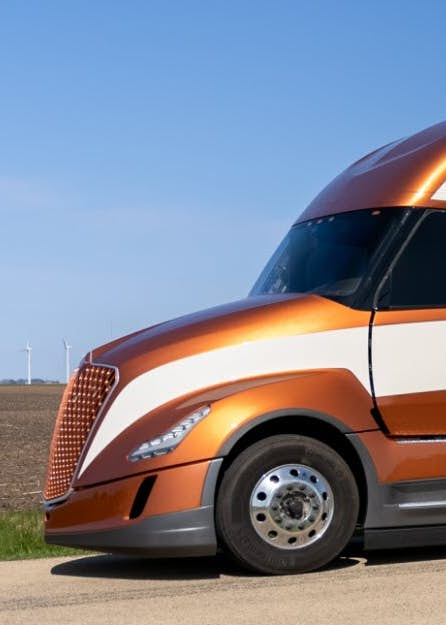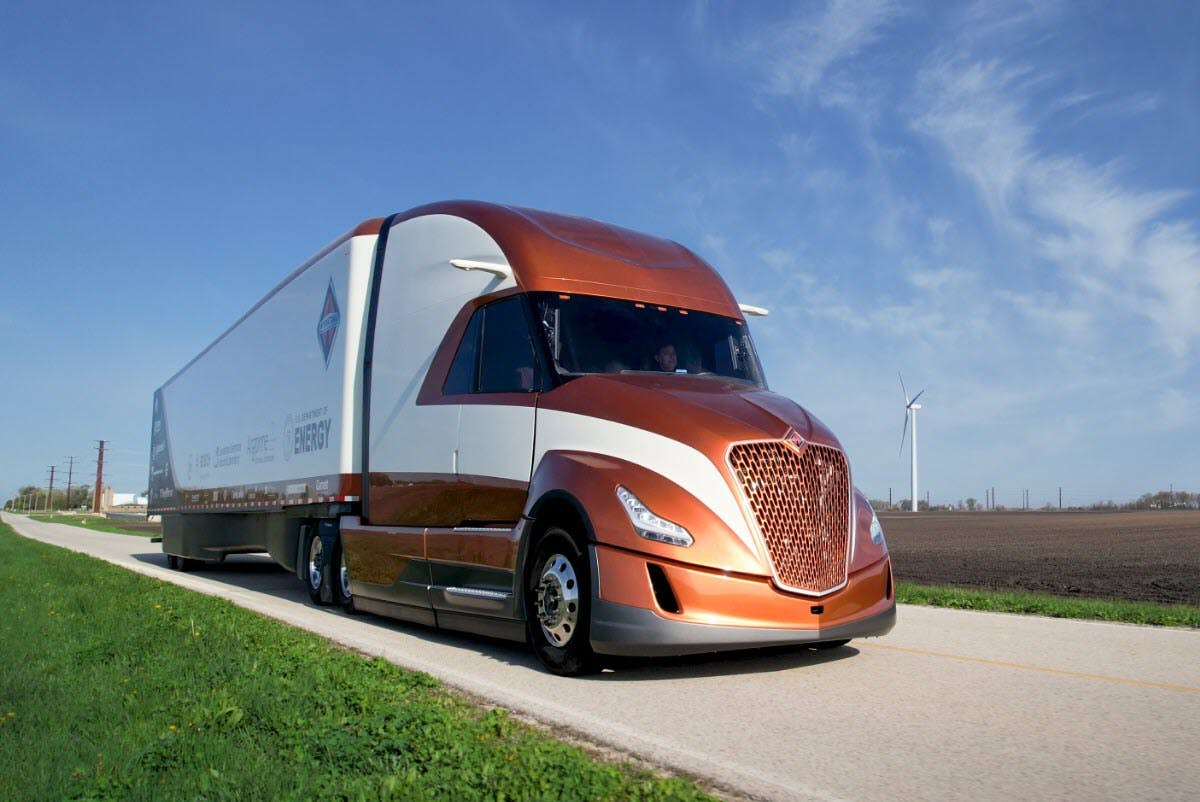INTERNATIONAL® SUPER TRUCK II

The results from International SuperTruck II demonstrates innovative vehicle efficiency improvements and advancements to high-voltage electrification. Co-funded by the Department of Energy (DOE), the SuperTruck II program highlights reduced emissions from on-road freight transportation with partner companies. Building on the success of the first SuperTruck program, engineers at Navistar developed next-generation technologies in the areas of weight reduction, rolling resistance, aerodynamics, and powertrain – all designed to deliver enhanced freight efficiency and help reduce U.S. dependency on fossil fuels in the commercial vehicle sector.
THE FUNDAMENTAL PHILOSOPHY BEHIND THE DESIGN WAS AN OPPORTUNITY TO DEVELOP HIGH-VOLTAGE TECHNOLOGIES OUTSIDE OF ELECTRIC VEHICLES. THESE EFFORTS WERE STARTED SIX YEARS AGO, BEFORE ELECTRIC EVEN EXISTED. AND A LOT OF THESE TECHNOLOGIES ARE CURRENTLY BEING USED IN OUR ELECTRIC VEHICLES TODAY.
Dean Oppermann | Navistar Inc.

International SuperTruck II was built as a hybrid vehicle that features a combustion engine and high-voltage accessories and technologies, making it easier for future development into fully electric vehicles. Engine improvements were made in key areas, including combustion, friction, gas exchange, and airflow through the engine.
It includes a 100% composite box designed for minimum aerodynamic drag with light weight, integrated cross members, controlled underbody flow with composite aero treatments, 6.7-kilowatt solar panels with connectivity options, and ride height control.

Freight-ton efficiency (FTE) is measured in ton-miles per gallon and is one of the most effective ways to measure the amount of energy required to transport goods. In short, the most freight-ton efficient trucks make the most of fuel mileage.
Thanks to structural composites that are made with lightweight materials, which allowed designers to be more aggressive with the design, International SuperTruck II is lighter and can handle more cargo. This also means the fuel it takes to transport each pound of cargo is much less — especially when combined with the improved fuel efficiency of the truck. The 170% improvement in FTE means a much more efficient drive for your fleets.

Brake thermal efficiency (BTE) is how the fuel-burning efficiency of an internal combustion engine is measured. Potential energy is lost in internal combustion engines due to heat and friction.
Engines that have a higher percentage of BTE enjoy better overall fuel economy. Many modern truck diesel engines see their BTE hover around 35% to 40%. That means over half of the engine’s potential energy is lost. International SuperTruck II’s 55.2% BTE makes more efficient use of the engine’s potential energy, which translates to better fuel economy.
Finding ways to improve BTE has been a key objective for International Truck. SuperTruck II demonstrates this major step forward to improve customers’ total cost of ownership as well as greenhouse emissions.

“Our goal is to continue to advance internal combustion engine technology as efficiently and sustainably as possible until there is parity with zero-emissions vehicles,” said Oppermann. “Development of both technologies concurrently ensures a smooth transition of technology to best serve customer needs. We are focused on the entire product ecosystem – product development itself as well as infrastructure charging, service and support of vehicle operation, end of life for batteries.”
The SuperTruck II program moves Navistar forward toward its long-term objective of complete vehicle electrification. The goal at International Truck is to continue pioneering technologies, accelerate the impact of sustainable mobility, and remain dedicated to delivering new solutions in the generations to come.





